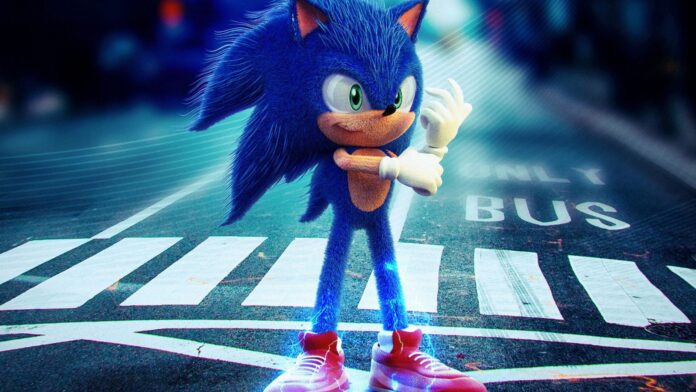Speeding into theaters with a whirlwind of energy, the “Sonic Movie” has become a hot topic in the entertainment world. The film’s success lies in its ability to bridge the gap between the animated world of the iconic blue hedgehog and the reality of live-action cinema, creating an experience that resonates with both old fans and new audiences alike.
Wallpaper:vqdwhkcm8j4= Sonic
 A chronicle of the Sonic Movie Franchise unfurls a saga of ingenuity, audience connection, cinematic scope and a chance to prove your humanity. In this section, we delve into its evolution and key milestones. What continues to please audiences worldwide is not just the vibrant adaptation of a beloved character, but also the franchise’s ability to evolve with changing times while staying true to the essence of Sonic.
A chronicle of the Sonic Movie Franchise unfurls a saga of ingenuity, audience connection, cinematic scope and a chance to prove your humanity. In this section, we delve into its evolution and key milestones. What continues to please audiences worldwide is not just the vibrant adaptation of a beloved character, but also the franchise’s ability to evolve with changing times while staying true to the essence of Sonic.
The Sonic Movie Franchise sets an example of a successful transition from game to screen. Early beginnings trace back to a Japanese video game, Sonic the Hedgehog, released in 1991 by Sega. While the game’s popularity soared, it took almost three decades, rich with adaptational challenges and character redesigns, for Sonic to hit the big screen. The film, Sonic the Hedgehog, premiered in 2020, introducing the world to a 3D live-action version of Sonic.
Key Characters and Their Portrayal
Sonic’s Character Development
 The protagonist, Sonic, undergoes a vibrant transformation in the movie adaptation. Initially depicted as a mischievous 2D hedgehog in 1991 by Sega, Sonic now embodies a hybrid 3D character in the film, retaining his inherent dynamism. His quirky personality, further amplified by Ben Schwartz’s voice, provides a heartfelt performance, merging comedy and action. Sonic’s blend of electric blue speed, empathy, and driver of the narrative raises the bar for character development in video game movies.
The protagonist, Sonic, undergoes a vibrant transformation in the movie adaptation. Initially depicted as a mischievous 2D hedgehog in 1991 by Sega, Sonic now embodies a hybrid 3D character in the film, retaining his inherent dynamism. His quirky personality, further amplified by Ben Schwartz’s voice, provides a heartfelt performance, merging comedy and action. Sonic’s blend of electric blue speed, empathy, and driver of the narrative raises the bar for character development in video game movies.
The Villains and Supporting Cast
Among the villains, Dr. Robotnik, played by Jim Carrey, stands out with his flamboyant, eccentric personality. Carrey’s performance enhances the character’s blend of intelligence and madness, bringing the notorious video game antagonist to life. The supporting cast, including James Marsden’s Tom Wachowski, provide a turning point for Sonic’s struggles, delivering grounded performances. They bring balance to Sonic’s superhuman abilities with their ordinary, relatable characteristics. This balance between the villains, supporting characters, and Sonic himself establish a well-rounded cinematic experience.
Visual and Special Effects in Sonic Movies
Advances in CGI and Animation Techniques

CGI serves as a linchpin in creating Sonic’s vivid on-screen persona, resulting in a range of responses from the audience. For example, digital technology enabled the transformation of Sonic, a beloved blue hedgehog, into a hybrid 3D character, which not only captivated the longtime fans but also succeeded in attracting a fresh audience.
Motion capture technology played a vital role in this transformation, by providing animators with a real-world reference, enhancing their ability to replicate lifelike movements. These advancements in CGI and animation techniques showed their impact when Sonic leaped, sprinted and whisked away in his signature style.
Moreover, the animators meticulously detailed every aspect of Sonic’s 3D incarnation. From the slight twitch of his pointed ears to the flicker of his emotion-laden eyes, the special effects presented a lifelike representation of Sonic that resonated with the audience.
Set Designs and Location Choices
The choice of settings and locations forms an essential backdrop to the story. With a mix of real and CGI-based sets, the Sonic Movie managed to create tangible and richly textured worlds coming to life.
Green Hill Zone, a familiar sight for Sega’s Sonic fans, appeared as lively as ever, eliciting nostalgia among viewers. CGI played a crucial role, merging seamlessly with real locations to enhance the visual appeal.
In contrast, the hyper-futuristic look of Dr. Robotnik’s lab and machines reflected an imaginative use of CGI, creating elements that stand impossible to replicate in actual locations. This blend of traditional set designs and advanced CGI-based settings played a pivotal role in molding the visual and special effects world of Sonic Movies.
A Journey of Innovation
The “Sonic Movie” franchise has truly come a long way from its humble beginnings as a 1991 Sega game. Its successful leap to the big screen is a testament to the enduring appeal of its characters and the innovative use of CGI and animation techniques. Sonic’s transformation from a 2D game character to a lifelike 3D film star has been a major highlight, captivating audiences with his realistic movements and meticulous detail.


